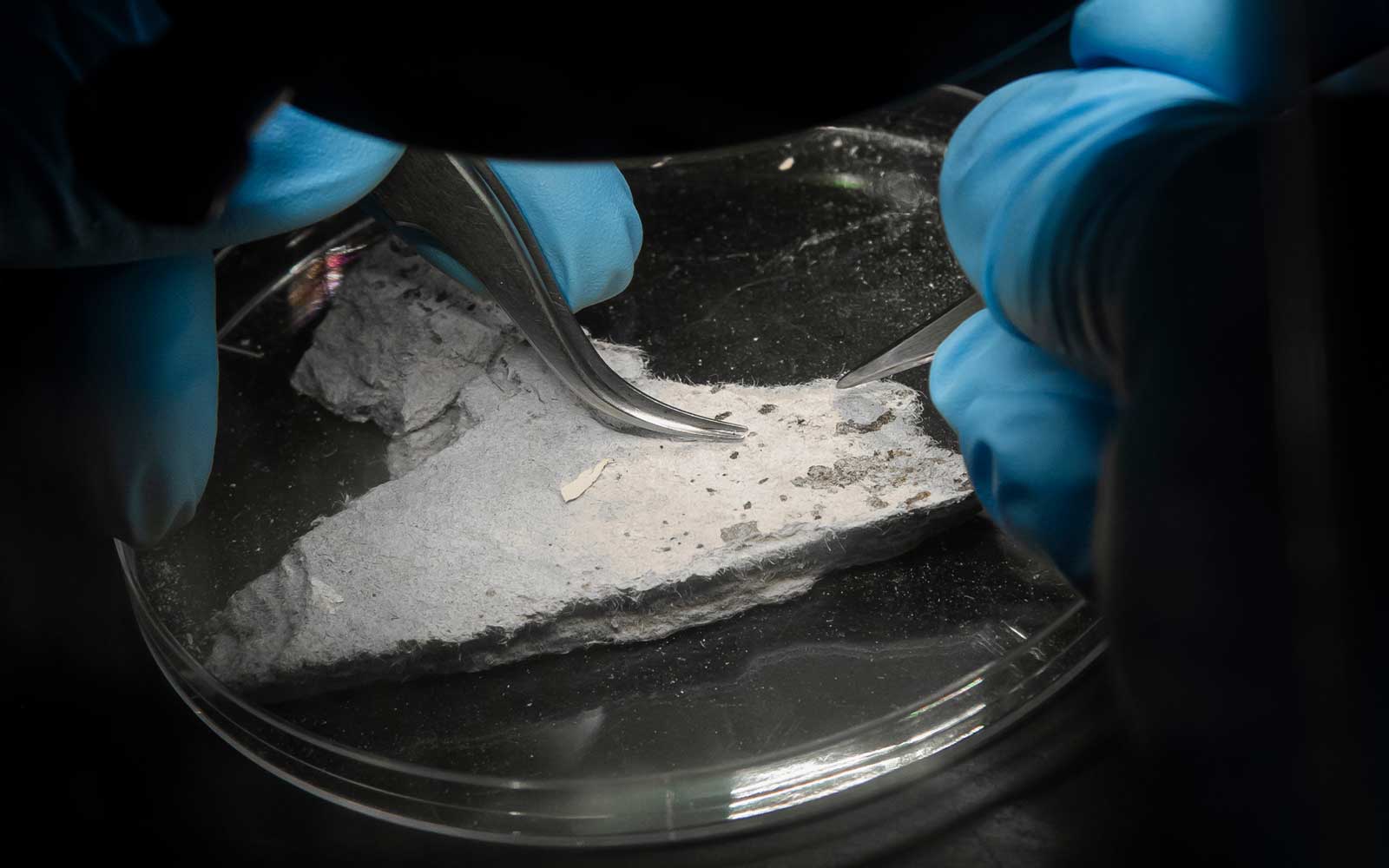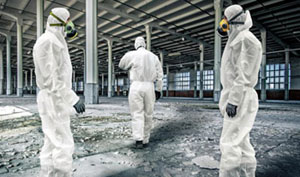Professional Asbestos Testing: Accurate and Fast Outcomes for Your Comfort
Professional Asbestos Testing: Accurate and Fast Outcomes for Your Comfort
Blog Article
The Full Refine of Accredited Asbestos Testing to Make Certain Home Compliance
In the world of building monitoring and conformity, the procedure of certified asbestos testing stands as a crucial element to ensure the safety and security and well-being of owners. Comprehending the elaborate actions involved in this testing method is critical for home proprietors and managers alike. From the initial analysis to the final interpretation of results, each stage plays a crucial role in figuring out the existence of asbestos within a property. Let's check out just how this thorough process unfolds to ensure adherence to rigorous guidelines and guard versus prospective carcinogen.
Accredited Asbestos Screening: Initial Evaluation
In carrying out the preliminary analysis for certified asbestos screening, a precise exam of the residential property's materials is critical to properly identify potential asbestos-containing products. Unique interest is given to materials that are vulnerable to damage or disruption, as these scenarios can launch dangerous asbestos fibers into the air.
Recognized asbestos assessors follow stringent methods established by regulative bodies to ensure the accuracy and dependability of the screening procedure. By thoroughly documenting searchings for and using advanced testing methods, assessors can supply property owners with a detailed record outlining the existence of asbestos, if any type of, and the advised actions for mitigation or removal. This preliminary evaluation sets the structure for succeeding activities to address asbestos worries and guarantee the safety and security and compliance of the residential or commercial property.
Example Collection Treatments for Asbestos Checking
Efficient sample collection treatments are vital in ensuring precise asbestos screening outcomes and compliance with regulatory standards. When gathering samples for asbestos screening, it is vital to adhere to rigorous methods to reduce the threat of contamination and ensure the integrity of the outcomes.
Firstly, it is vital to determine the suspected asbestos-containing materials (ACMs) and prioritize sampling locations based upon elements such as the material's condition, availability, and capacity for disruption. Asbestos Testing. Examples ought to be gathered from various locations within the home to provide a comprehensive evaluation of asbestos presence
Throughout sample collection, licensed professionals must wear proper individual protective devices (PPE) to secure against asbestos direct exposure. They have to use clean devices, such as disposable handwear covers and plastic bed linen, to prevent cross-contamination in between samples. Examples should be very carefully collected utilizing a specified technique, such as wet cleaning or coring, and securely sealed in airtight containers to maintain their honesty throughout transport to the research laboratory for analysis.
Laboratory Evaluation Refine for Asbestos Examples
Upon completion of the sample collection process, the asbestos examples are diligently transferred to approved laboratories for careful evaluation. At the lab, educated technicians manage the examples with severe like stop any type of cross-contamination or sample deterioration. The initial step busy analysis process is sample prep work, where the accumulated samples are browse this site carefully processed to extract the asbestos fibers. Asbestos Testing. This step is vital to make sure accurate cause the subsequent analysis.

When the evaluation is total, a thorough record is generated, outlining the findings and verifying whether asbestos is existing, the sort of asbestos fibers recognized, and the focus levels. This information is important for residential or commercial property owners to take the needed actions to make certain compliance with asbestos regulations and secure the wellness of owners.

Reporting and Interpretation of Asbestos Test Results
Accredited asbestos screening labs provide comprehensive reports that supply crucial insights into the existence, kind, and focus degrees of asbestos fibers found in samples accumulated from residential properties. These reports are crucial for homeowner and supervisors to understand the danger posed by asbestos and make informed choices concerning its monitoring or removal. The reports typically include information on the techniques used for screening, the places where samples were taken, the kind of asbestos recognized (such as chrysotile, amosite, or crocidolite), and the concentration levels of asbestos fibers detected.
Interpreting these outcomes calls for knowledge to assess the possible health threats linked with asbestos exposure, establish the proper strategy, and guarantee regulatory compliance (Asbestos Testing). Depending on the searchings for, recommendations may range from continued monitoring and internet maintenance to encapsulation or total asbestos reduction. Property proprietors should very carefully evaluate these records and speak with asbestos specialists to establish a detailed plan for resolving any asbestos problems identified
Guaranteeing Residential Or Commercial Property Conformity With Asbestos Rules
To preserve adherence with asbestos policies, homeowner need to carefully execute measures to guarantee conformity with relevant laws and guidelines. This consists of performing routine asbestos assessments by certified professionals to determine any kind of visibility of asbestos-containing materials within the home. Once asbestos is identified, property proprietors need to comply with asbestos administration plans that outline correct containment, removal, or encapsulation treatments to avoid exposure and spread of asbestos fibers. Compliance likewise includes maintaining detailed records of asbestos screening, upkeep, and elimination activities for inspection objectives.
Residential property owners need to give asbestos awareness training to employees and residents to decrease the danger of asbestos direct exposure and guarantee appropriate handling of materials that may include asbestos. In addition, it is critical to stay educated regarding any updates or modifications in asbestos policies to adjust management practices as necessary. By proactively dealing with asbestos conformity requirements, homeowner can develop a risk-free setting for occupants and minimize possible lawful and wellness threats related to asbestos direct exposure.
Conclusion
Finally, certified asbestos screening is a critical procedure for making certain home compliance with regulations. The initial evaluation, sample collection procedures, laboratory evaluation, and interpretation of results are very important action in this procedure. By adhering to these procedures, homeowner can identify and deal with any type of asbestos dangers present, protecting the wellness and security of passengers and preserving conformity with regulatory requirements.
Report this page